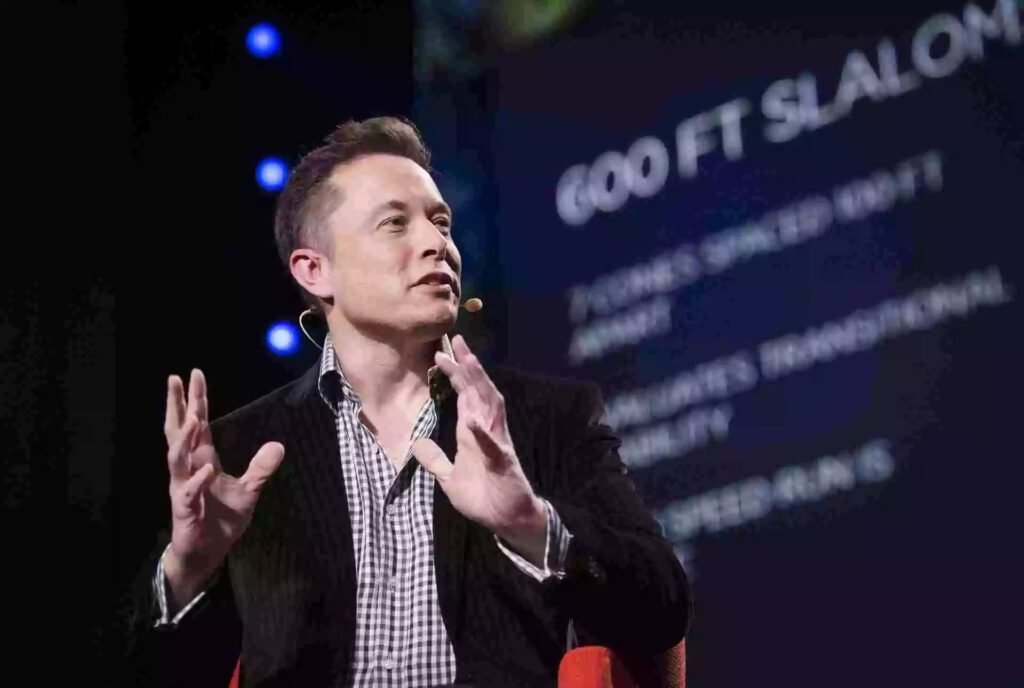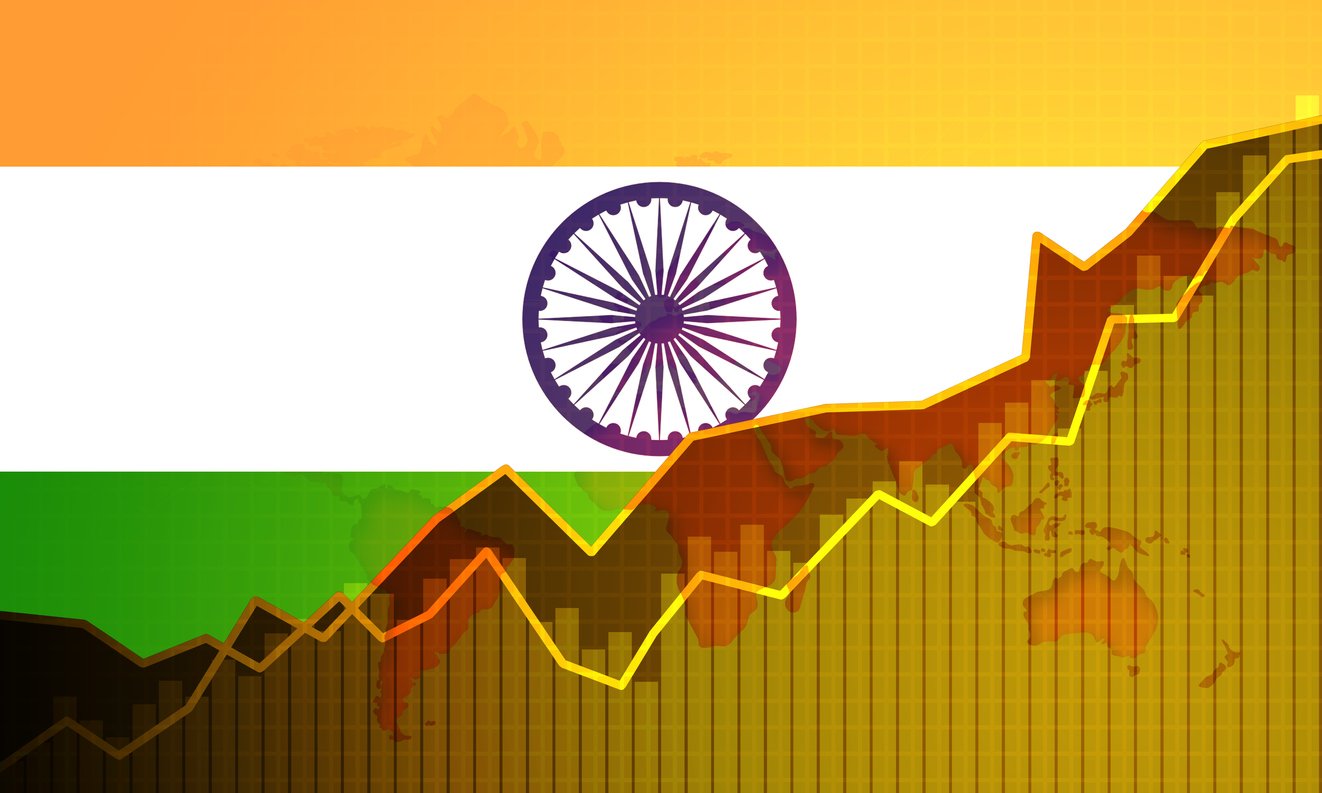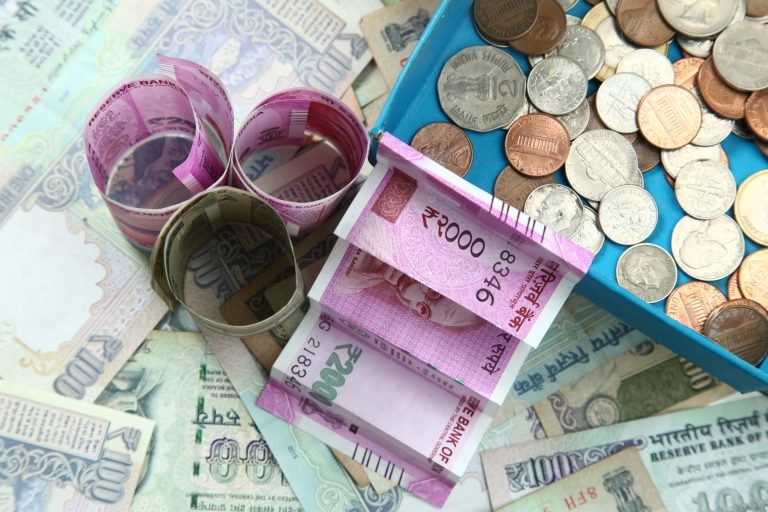
Indian Economy journey
India’s economic journey is a complex tale of transitions and challenges. Starting as a mixed planned economy after gaining independence in 1947, it leaned towards Soviet-style policies, emphasizing state intervention and bureaucracy-driven enterprises. This era was marked by extensive regulation known as the Licence Raj. However, the collapse of the Soviet Union and a balance of payments crisis in 1991 prompted India to pivot toward economic liberalization and indicative planning.
Since the early 1990s, India’s economy has transformed into a mixed middle-income developing social market economy. Over the years, it has become the world’s fifth-largest economy by nominal GDP and the third-largest by purchasing power parity (PPP). Still, when measuring per capita income, India ranks lower, reflecting income inequality and a large population.
India’s economic growth has been impressive in the 21st century, with an average annual GDP growth rate of 6% to 7%. The nation is a significant player in the global economy, accounting for 7.2% of the world’s GDP in PPP terms. However, this growth hasn’t been without hurdles. Informal domestic economies persist, and the COVID-19 pandemic caused a setback in both economic growth and poverty reduction.
The Indian economy heavily relies on domestic consumption, contributing to nearly 70% of its GDP. The country boasts a large consumer market and is also driven by government spending, investments, and exports. India has been a member of the World Trade Organization since 1995, and while it ranks relatively low on the Ease of Doing Business Index, it has been making efforts to improve its business environment.
Income inequality is a persistent challenge in India, with one of the world’s highest numbers of billionaires coexisting with widespread poverty. Tax culture is underdeveloped, with a relatively small proportion of the population paying taxes.
In response to the 2008 global financial crisis, India adopted Keynesian policies and implemented stimulus measures to stimulate growth and demand. Subsequently, the economy recovered.
India’s trading partners include the United States, China, UAE, Saudi Arabia, and others, and it has free trade agreements with various nations and blocs.
The service sector is the largest contributor to India’s GDP, followed by the industrial and agricultural sectors. India also boasts significant stock exchanges, including the Bombay Stock Exchange and the National Stock Exchange. The country is a major manufacturer and holds substantial foreign exchange reserves.
However, India faces challenges such as high public debt, rising income inequality, unemployment, and a drop in aggregate demand. There have been concerns about the accuracy of economic data in recent years.
Overall, India’s economy has made significant strides in recent decades, but it continues to grapple with various economic and social issues as it strives for sustainable growth and development.
Indian Economic Basic Concepts
Indian Economic Basic Concepts
Basic Economic Concepts:
- Definitions of key economic terms such as scarcity, opportunity cost, demand, supply, and equilibrium.
- Explanation of factors of production: land, labor, capital, and entrepreneurship.
- Microeconomics:
- Market structures: perfect competition, monopoly, monopolistic competition, oligopoly.
- Consumer behavior: utility, indifference curve analysis.
- Theory of production and cost.
- Factor pricing: wages, rent, interest, profit.
- Welfare economics: concepts of efficiency and equity.
- Macroeconomics:
- National income accounting: GDP, GNP, GNI, NNP, etc.
- Business cycles and economic fluctuations.
- Unemployment and types of unemployment.
- Inflation and types of inflation.
- Fiscal policy: government budgets, taxation, and expenditure.
- Monetary policy: role of the central bank, money supply, interest rates.
- Balance of payments and exchange rates.
- Economic growth and development.
- International Trade and Finance:
- Comparative advantage and gains from trade.
- Trade theories: Ricardian, Hecksher-Ohlin, and New Trade Theories.
- Trade policy: tariffs, quotas, trade agreements.
- Foreign exchange markets and exchange rate determination.
- International financial institutions: IMF, World Bank.
also read abouthttps://pocketnews.in/unlocking-the-potential-profitable-online-ecommerce-business-ideas-for-success/
- Development Economics:
- Concepts of development and measures of development.
- Poverty and inequality: concepts and measures.
- Human development index (HDI) and multidimensional poverty index (MPI).
- Strategies for inclusive growth and sustainable development.
- Public Finance:
- Government budgeting: types of budgets, revenue and expenditure.
- Taxation: direct and indirect taxes, principles of taxation.
- Public debt and fiscal sustainability.
- Indian Economy:
- Economic planning in India: Five-Year Plans, NITI Aayog.
- Agriculture sector: Green Revolution, agrarian issues.
- Industrial policy and sectoral reforms.
- Banking and financial institutions: RBI, NABARD, SEBI.
- Infrastructure and energy sectors.
- Public sector and disinvestment.
- Current Economic Issues:
- Recent economic policies and reforms in India.
Current position of Indian economy
Current position of Indian economy
As of August 14, 2023, India has ascended to the esteemed position of being the world’s fifth-largest economy, signifying a remarkable journey of economic growth and transformation. This achievement is a testament to several key factors that have underpinned India’s rise on the global stage.
1. Strong Economic Foundations: India’s economic ascent is built upon a solid foundation. Over the years, the nation has diversified its industrial sectors, expanded its services industry, and laid the groundwork for sustained growth. This economic diversification has contributed to resilience in the face of global economic challenges.
2. Thriving Domestic Demand: A burgeoning middle class and a vast population have cultivated a thriving domestic demand within India. This internal market force has become a formidable driver of economic activity, drawing investments and fostering entrepreneurship across various sectors.
3. Careful Financial Management: India’s financial stewardship has been characterized by prudent fiscal and monetary policies. The Reserve Bank of India (RBI) has played a pivotal role in maintaining economic stability, ensuring that inflation remains in check, and interest rates are conducive to growth.
4. High Saving Rates: India has a long-standing tradition of high saving rates among its citizens. This culture of savings has provided the nation with a steady pool of capital for investments, which, in turn, fuels economic expansion and infrastructure development.
5. Favorable Demographic Trends: One of India’s most potent assets is its demographic dividend. A youthful and growing population not only signifies a large labor force but also the potential for innovation, increased productivity, and dynamic entrepreneurship. Properly harnessed, this demographic advantage can continue to propel India’s growth.
India’s rise to the fifth-largest economy is not just a statistic; it reflects a nation’s resilience, adaptability, and aspirations. However, with this newfound status comes the responsibility to address various challenges. India must continue to invest in critical areas like infrastructure, education, healthcare, and social welfare to ensure that economic growth translates into an improved quality of life for all its citizens.
This achievement underscores India’s potential and its ongoing commitment to solidify its presence on the global economic stage. It’s a moment of pride for the nation and a reminder of the opportunities and responsibilities that come with such economic prominence.
What is the growth and development of the economy in India
What is the growth and development of the economy in India
India’s economic growth and development have been notable in recent years, driven by various factors and supported by government policies. Here’s an overview of the economic outlook and key drivers as of FY22/23:
Economic Growth: In FY22/23, India’s real GDP expanded at an estimated rate of 6.9 percent. This growth rate is significant and reflects the resilience of the Indian economy, especially in the context of global economic challenges and the impact of the COVID-19 pandemic.
Robust Domestic Demand: One of the primary drivers of India’s economic growth has been its robust domestic demand. A burgeoning middle class and a large population create a strong internal market, fostering demand for goods and services. This internal consumption has been a key pillar of economic expansion.
Strong Investment Activity: The government’s focus on infrastructure development and investment has been a crucial driver of economic growth. Infrastructure projects not only create jobs but also enhance the overall economic environment and contribute to long-term growth potential.
Buoyant Private Consumption: Private consumption, especially among higher income earners, has been a significant contributor to economic growth. As income levels rise and consumer confidence remains strong, spending on various goods and services has increased.
Government Initiatives: The government has implemented various initiatives to boost economic growth, including the “Make in India” program to promote manufacturing, “Digital India” to advance technology adoption, and reforms in areas like taxation and ease of doing business.
Challenges and Considerations: While India’s economic growth is impressive, it also faces challenges. Income inequality, unemployment, and disparities in access to healthcare and education persist. Additionally, managing inflation and fiscal deficits remains a concern.
COVID-19 Impact: The COVID-19 pandemic disrupted economic activities globally, including in India. However, the nation’s ability to bounce back and achieve substantial growth in FY22/23 demonstrates its resilience and adaptability.
In summary, India’s economic outlook as of FY22/23 is characterized by robust growth driven by domestic demand, strong investments in infrastructure, and buoyant private consumption. The government’s initiatives and policy reforms also play a pivotal role in sustaining and accelerating this growth. However, addressing socio-economic disparities and ensuring inclusive growth will remain important considerations on India’s path to continued development.
India economy in trillion
India economy in trillion
The projected growth of the Indian economy, as per the International Monetary Fund’s (IMF) World Economic Outlook, indicates significant expansion in the coming years. According to this forecast, here is an overview of India’s economic size and its anticipated growth:
2021-22: The Indian economy was estimated to be approximately $3.2 trillion during this fiscal year.
2022-23: The IMF’s projection suggests that the Indian economy will grow to around $3.5 trillion in this fiscal year. This indicates a healthy rate of economic expansion.
2026-27: The IMF’s forecast further predicts that India’s economy is expected to surpass the $5 trillion mark during this fiscal year. Crossing the $5 trillion threshold is a significant milestone and reflects India’s potential as a major global economic player.
This anticipated growth trajectory underscores India’s economic resilience and potential for sustained development. Several factors contribute to this growth:
1. Domestic Market: India’s large and diverse population, coupled with a growing middle class, fosters a robust domestic market, driving demand for goods and services.
2. Economic Reforms: Various economic reforms and policy initiatives by the government aim to promote investment, manufacturing, and ease of doing business, which can stimulate economic growth.
3. Infrastructure Development: Investments in infrastructure projects, such as transportation, energy, and digital connectivity, can boost economic productivity and create jobs.
4. Demographic Dividend: India’s youthful and expanding population can contribute to increased labor force participation, innovation, and economic productivity.
5. Global Trade: Expanding trade relationships and participation in international markets can contribute to economic growth, especially in sectors like information technology and services.
However, achieving and sustaining this growth rate also presents challenges, including addressing income inequality, improving access to education and healthcare, and managing environmental concerns.
It’s important to note that economic forecasts can be influenced by a range of factors, including global economic conditions, policy changes, and unforeseen events. Therefore, while these projections provide valuable insights, they should be interpreted with a degree of caution.
Overall, India’s economic growth prospects as outlined by the IMF reflect a positive trajectory, highlighting the nation’s potential to emerge as a significant player in the global economy in the coming years.
Conclusion
In conclusion, the economy of India has witnessed remarkable growth and transformation over the years, and it continues to hold a prominent position on the global economic stage. Several key factors contribute to India’s economic outlook:
- Historical Significance: India’s economy was once the largest in the world for most of recorded history, reflecting its historical contributions to global trade and commerce.
- Robust Growth: As of FY22/23, India’s real GDP is estimated to have expanded at a rate of 6.9 percent, driven by strong domestic demand, investment activity, and private consumption.
- Domestic Demand: India’s burgeoning middle class and large population create a strong internal market, fostering demand for goods and services.
- Investment in Infrastructure: The government’s focus on infrastructure development has been a crucial driver of economic growth, creating jobs and enhancing economic prospects.
- Buoyant Private Consumption: Rising income levels and consumer confidence have contributed to increased private consumption, particularly among higher income earners.
- Government Initiatives: The government has implemented various initiatives to boost economic growth, including reforms in taxation, ease of doing business, and programs like “Make in India” and “Digital India.”
- COVID-19 Resilience: Despite pandemic-related disruptions, India has shown resilience and adaptability in achieving substantial economic growth in recent years.
- Future Outlook: IMF projections suggest that India’s economy is poised to grow from $3.2 trillion in 2021-22 to $3.5 trillion in 2022-23 and potentially cross the $5 trillion mark by 2026-27.
However, India also faces challenges, including income inequality, unemployment, and disparities in access to essential services like healthcare and education. Managing inflation and fiscal deficits remains a concern, and ensuring inclusive growth will be crucial.
In light of these factors, India’s economic journey is a dynamic one, marked by remarkable achievements and ongoing efforts to address the diverse needs of its population while pursuing sustainable economic development. The nation’s potential as a major global economic player is evident, and the coming years will likely be pivotal in shaping India’s role in the global economy.
FAQs
Here are some frequently asked questions (FAQs) about the economy of India, incorporating the key points discussed above:
1. What is the current state of India’s economy?
India’s economy has been growing steadily, with a real GDP estimated to have expanded at 6.9 percent in FY22/23. It’s characterized by robust domestic demand, infrastructure investment, and private consumption.
2. What factors contribute to India’s economic growth?
Several factors drive India’s economic growth, including its large and growing population, strong domestic demand, government-led infrastructure development, and increased private consumption.
3. What are some government initiatives aimed at boosting the economy?
The Indian government has launched initiatives such as “Make in India” to promote manufacturing, “Digital India” to advance technology adoption, and various reforms to enhance the ease of doing business.
4. How has India’s economy weathered the COVID-19 pandemic?
India has shown resilience during the pandemic, rebounding with significant growth in FY22/23 despite initial disruptions. Robust domestic demand and government stimulus measures played a role in this recovery.
5. What is India’s economic outlook for the future?
According to IMF projections, India’s economy is expected to reach approximately $3.5 trillion in 2022-23 and potentially exceed $5 trillion by 2026-27, showcasing its growth potential.
6. What challenges does India’s economy face?
India grapples with challenges like income inequality, unemployment, and disparities in access to essential services. Additionally, managing inflation and fiscal deficits remains a concern.
7. How does India’s historical economic significance relate to its current status?
India was historically the world’s largest economy for much of recorded history. While it lost that status during colonialism, it’s now on a path to regain prominence on the global economic stage.
8. What role does the demographic dividend play in India’s growth?
India’s youthful and expanding population contributes to its economic growth potential. This demographic dividend can drive innovation, increased productivity, and economic development.
9. What are India’s strengths in the global economy?
India boasts a robust domestic market, diverse industries, and a growing middle class. It also has a strong focus on technology and services, making it a significant player in the global IT sector.
10. What are the future challenges and opportunities for India’s economy?
India needs to address income inequality, improve access to education and healthcare, and ensure inclusive growth. It also has opportunities to further participate in global trade and innovation-driven industries.
These FAQs provide a comprehensive overview of India’s economy, its current state, growth drivers, challenges, and future prospects. India’s economic journey is marked by both historical significance and promising opportunities in the global economy.
https://en.wikipedia.org/wiki/Economy_of_India
also readHow to become a successful businessman | 10 ways






